Hypertension treatment protocol: Punjab, India
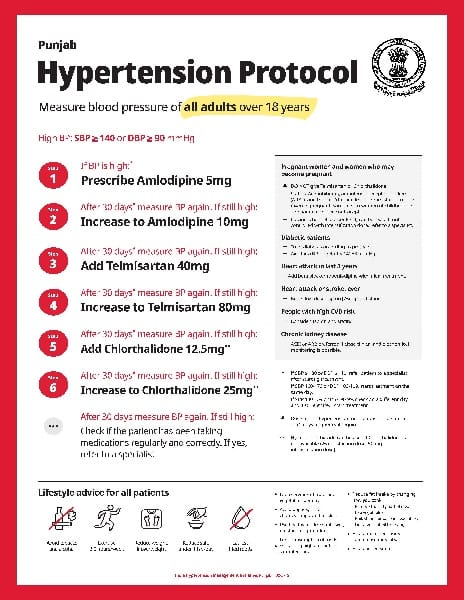
Sample treatment protocol used by RTSL partners in Punjab, India
Hypertension treatment protocol: Telangana, India
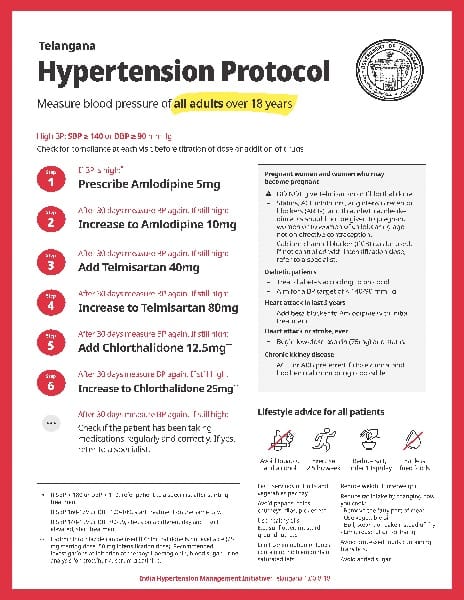
Sample treatment protocol used by RTSL partners in Telangana, India
Hypertension treatment protocol: Madhya Pradesh, India
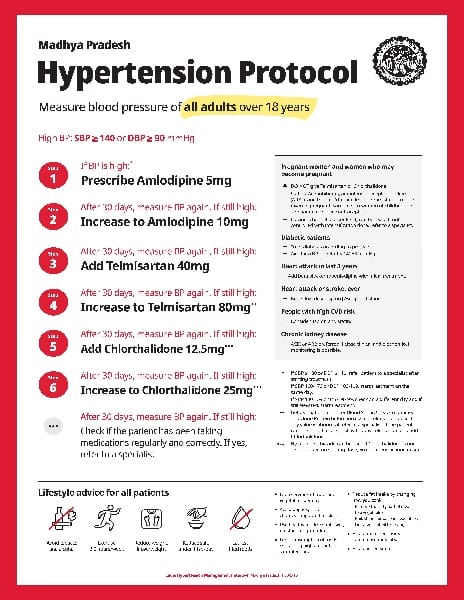
Sample treatment protocol used by RTSL partners in Madhya Pradesh, India
Hypertension treatment protocol: Kerala, India
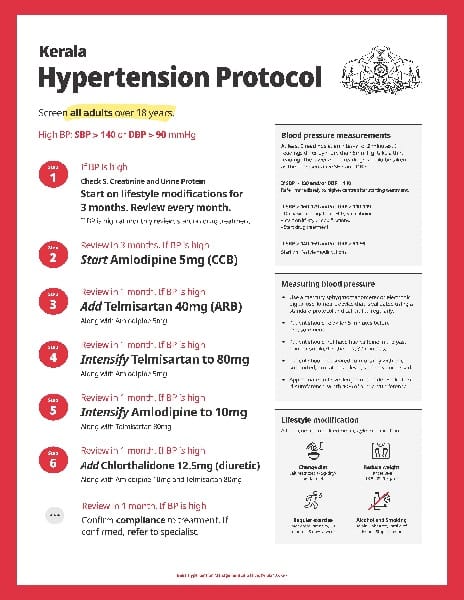
Sample treatment protocol used by RTSL partners in Kerala, India
Hypertension treatment protocol: Maharashtra, India
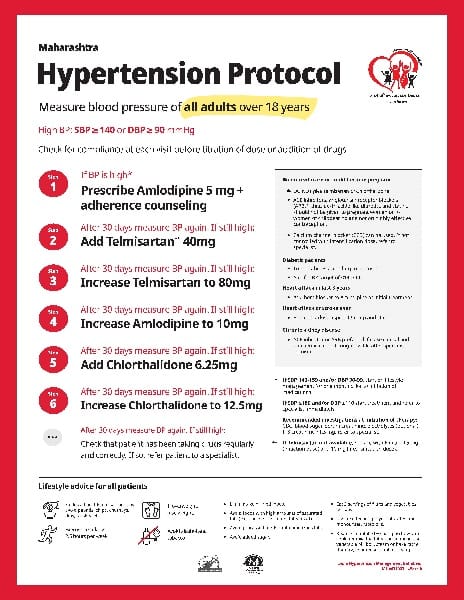
Sample treatment protocol used by RTSL partners in Maharashtra, India
Hypertension treatment protocol: Philippines
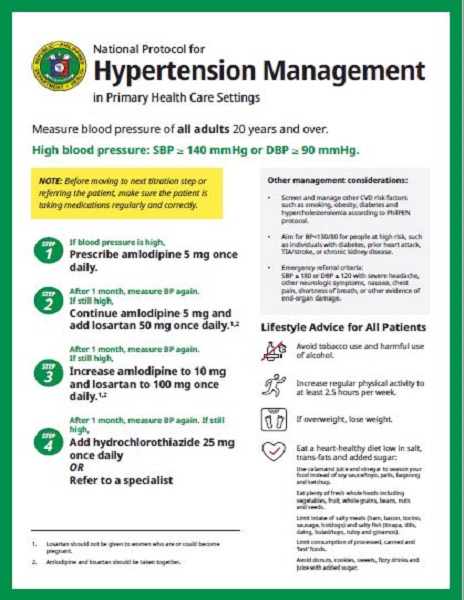
Sample treatment protocol used by RTSL partners in the Philippines
Hypertension treatment protocol: Ethiopia
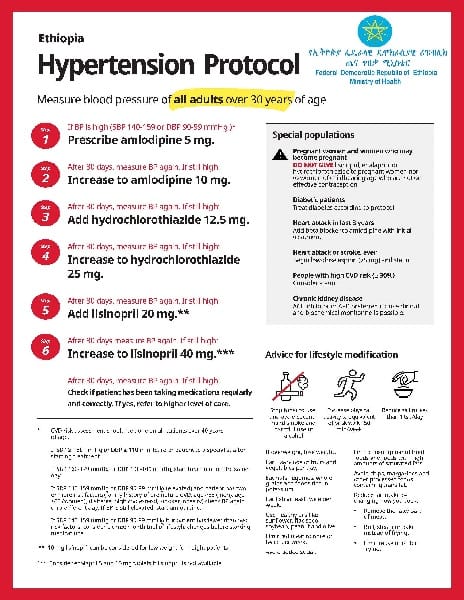
Sample treatment protocol used by RTSL partners in Ethiopia
Hypertension treatment protocol: Bangladesh
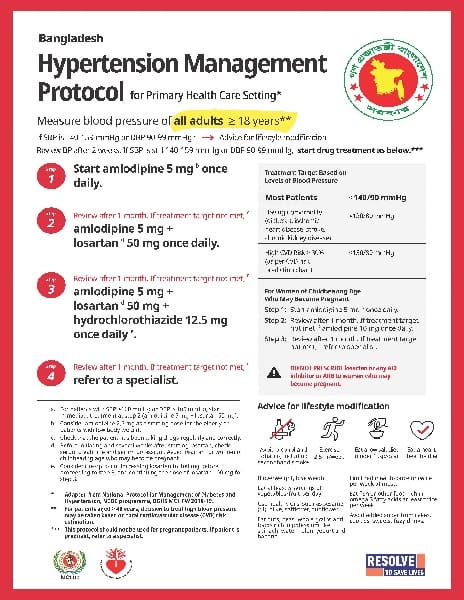
Sample treatment protocol used by RTSL partners in Bangladesh
Saving 100 million lives
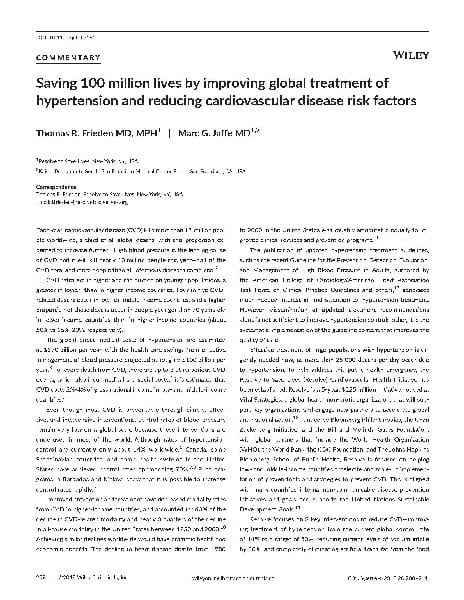
Journal of Clinical Hypertension article on lifesaving potential of hypertension control, salt reduction and trans fat elimination
Hypertension treatment protocol: Single pill combination as first-line treatment
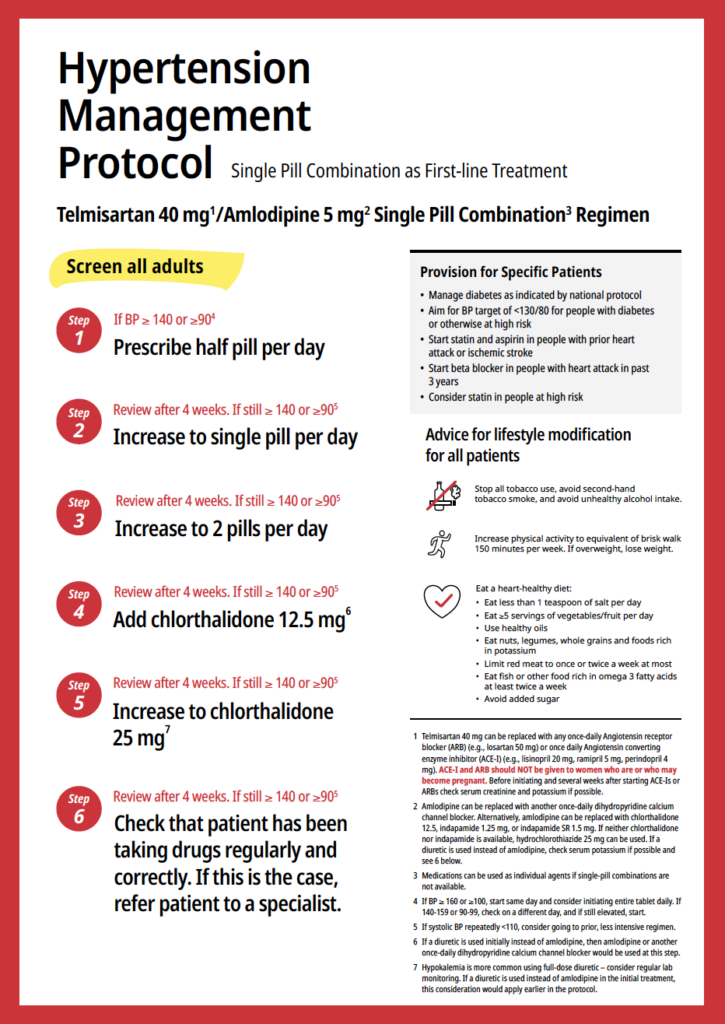
Sample treatment protocol from Resolve to Save Lives
Hypertension treatment protocol: Calcium channel blocker as first-line treatment
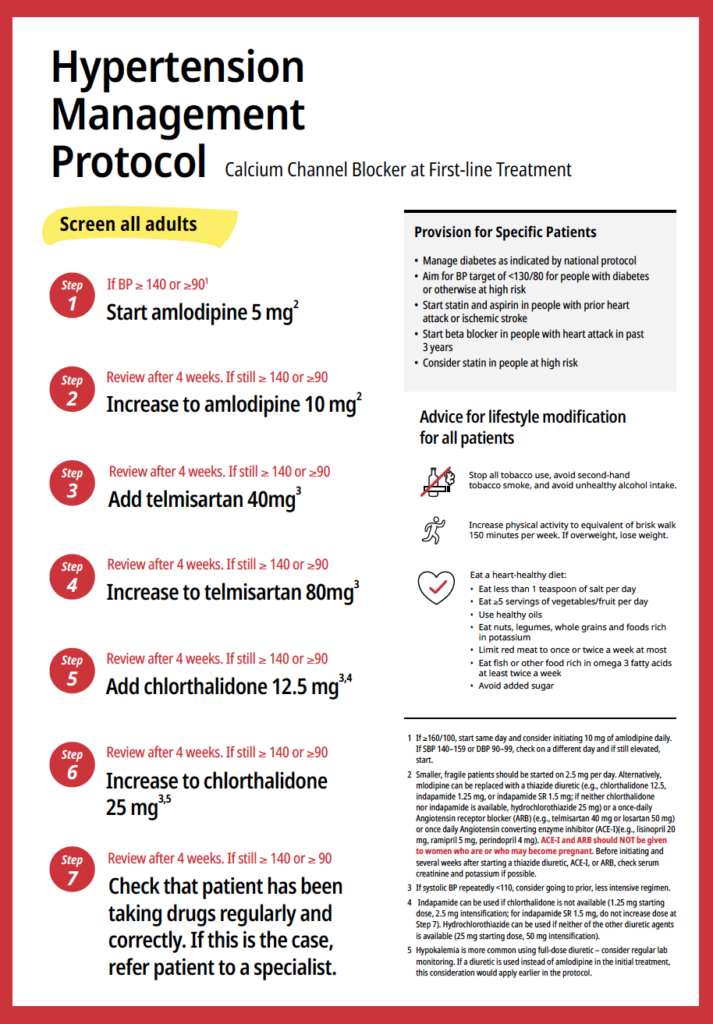
Sample treatment protocol from Resolve to Save Lives
Template for developing a strategic advisory committee for hypertension prevention and control
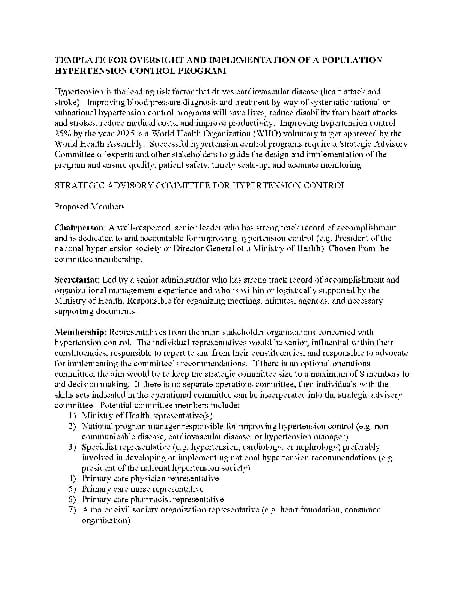
Template with proposed members and terms of reference
Tool for the development of a consensus protocol for treatment of hypertension
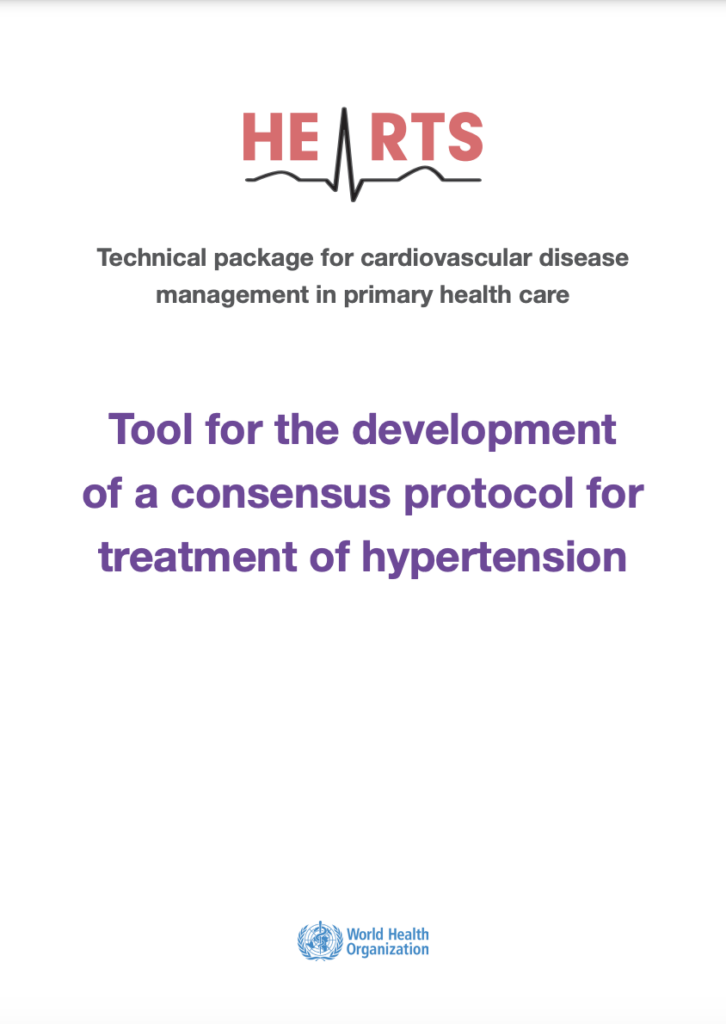
WHO HEARTS package tool for treatment protocol development
Blood pressure measurement checklist
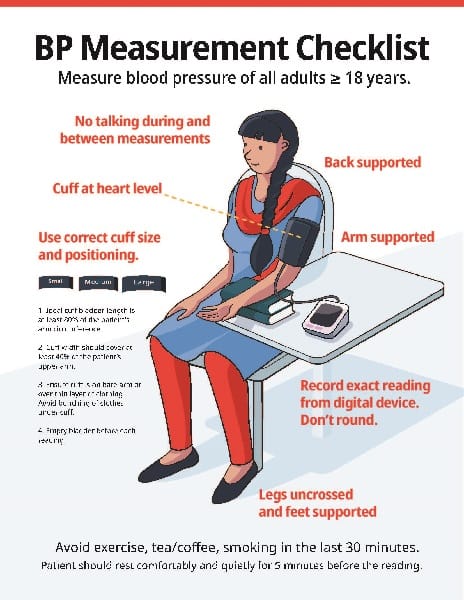
Poster with tips for taking blood pressure correctly from Resolve to Save Lives
10 hypertension best practices
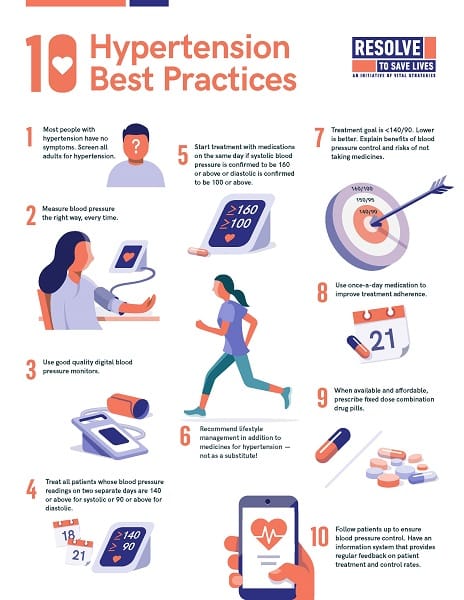
Fact sheet from Resolve to Save Lives with best practices for clinicians
Frequently asked questions: Hypertension management
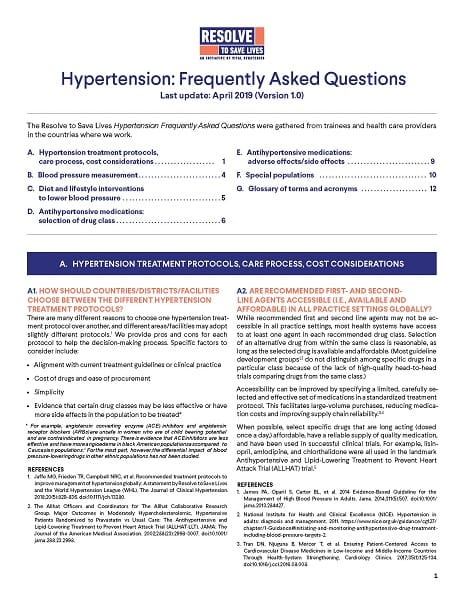
FAQs on hypertension management compiled by Resolve to Save Lives
Fixed‐dose combination pharmacologic therapy to improve hypertension control worldwide
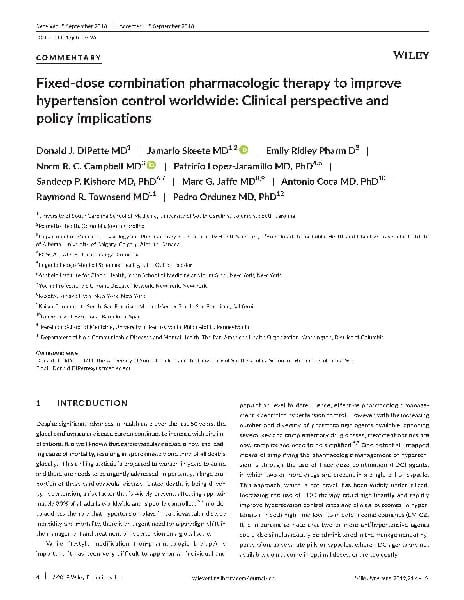
Commentary published in the Journal of Clinical Hypertension
Annotated bibliography: Hypertension control
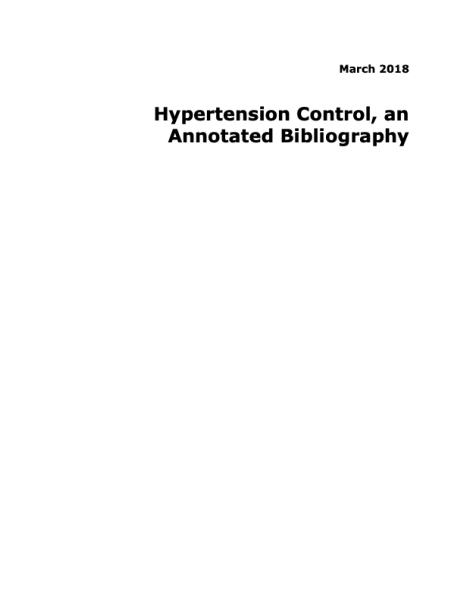
Annotated bibliography on hypertension control from the US CDC. Last updated in 2018.
Rapid scale-up of COVID-19 training for frontline health workers in 11 African countries

Effective outbreak response requires sustained investments in health systems—going beyond training to include adequate equipment, space and staffing levels. For Human Resources for Health, our colleagues at ICAP at Columbia University analyzed a COVID-19 response training program for health care workers in 11 African countries in mid-2020. While confidence in managing COVID-19 increased, barriers like […]
Psychosocial determinants of adherence to public health and social measures (PHSMs) in 18 African Union Member States during the early phase of the COVID-19 pandemic: results of a cross-sectional survey
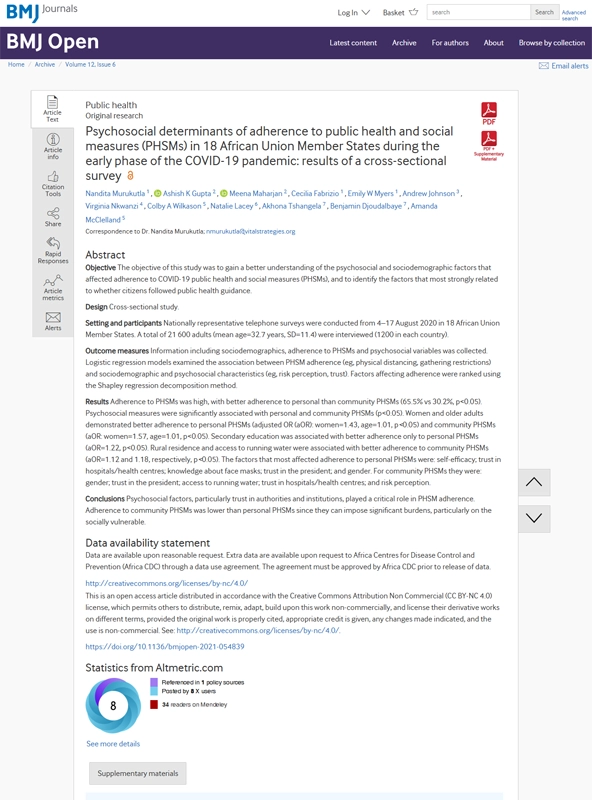
Trust in authorities, a sense of control over one’s environment and behavior, and access to resources influenced adherence to public health and social measures during the COVID-19 pandemic. Writing in BMJ Open, experts at Resolve to Save Lives analyzed psychosocial and sociodemographic factors influencing COVID-19 public health and social measure (PHSM) adherence through a cross-sectional […]
Protecting the world from infectious disease threats: now or never
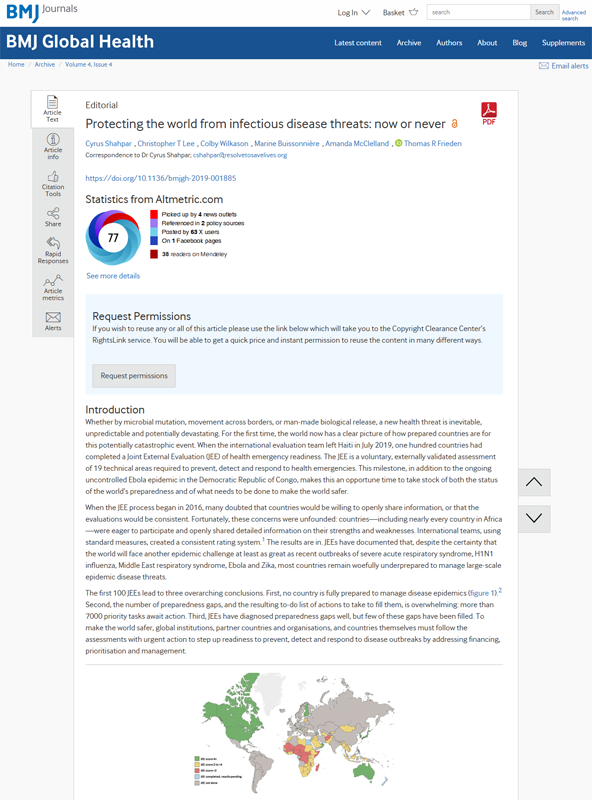
There is an urgent need for global cooperation, leadership, and sustainable financing to address critical gaps in health preparedness as revealed by the World Health Organization (WHO)’s Joint External Evaluation (JEE). Writing in BMJ Global Health, experts at Resolve to Save Lives highlight the results of WHO’s JEE process, in which 100 countries assessed their […]
WHO global report on sodium intake reduction

WHO report assessing global progress in implementing sodium reduction policies, providing insights by country, region, and income group to guide future actions for reducing sodium intake and improving cardiovascular health.
Preparing for pandemics and other health threats: societal approaches to protect and improve health
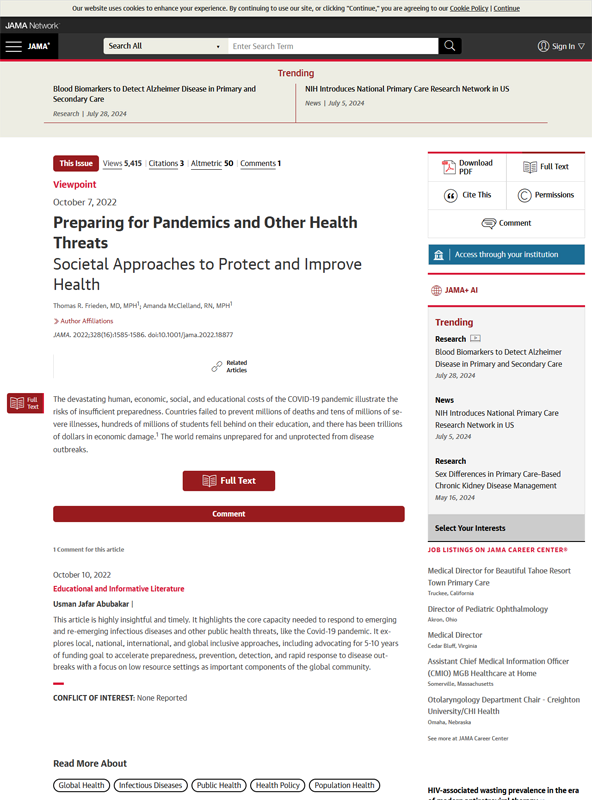
There is an urgent need for sustained funding and coordinated global efforts to strengthen health security capacities and prevent future pandemics. Writing in the Journal of the American Medical Association, experts from Resolve to Save Lives analyze critical lessons from the COVID-19 pandemic, highlighting gaps in preparedness that led to millions of deaths, economic losses, […]
Nigeria’s joint external evaluation and national action plan for health security
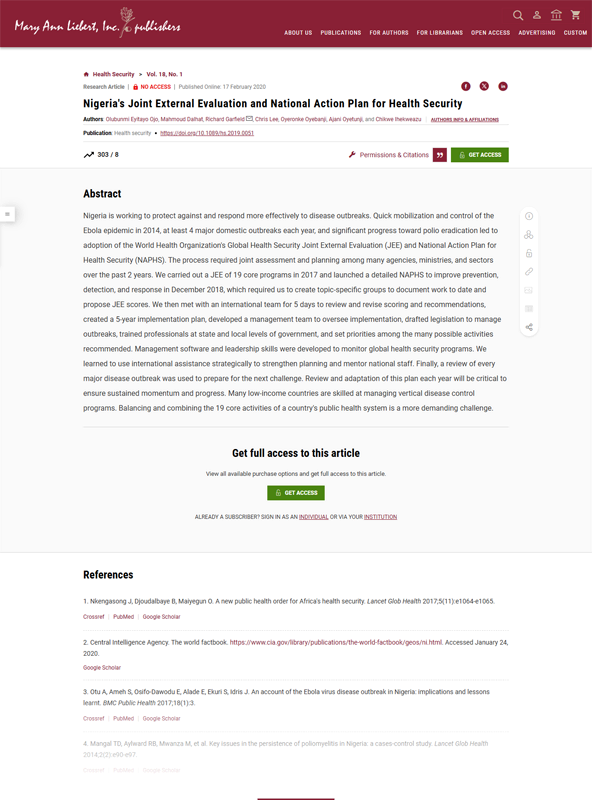
Nigeria’s adoption of the World Health Organization’s Joint External Evaluation (JEE) and National Action Plan for Health Security (NAPHS) will strengthen its national health security efforts. Writing in Health Security, experts at Resolve to Save Lives document the process of completing a JEE with partners in Nigeria in 2017 and subsequently creating a NAPHS to […]
Multisectoral resilience for the next global health emergency
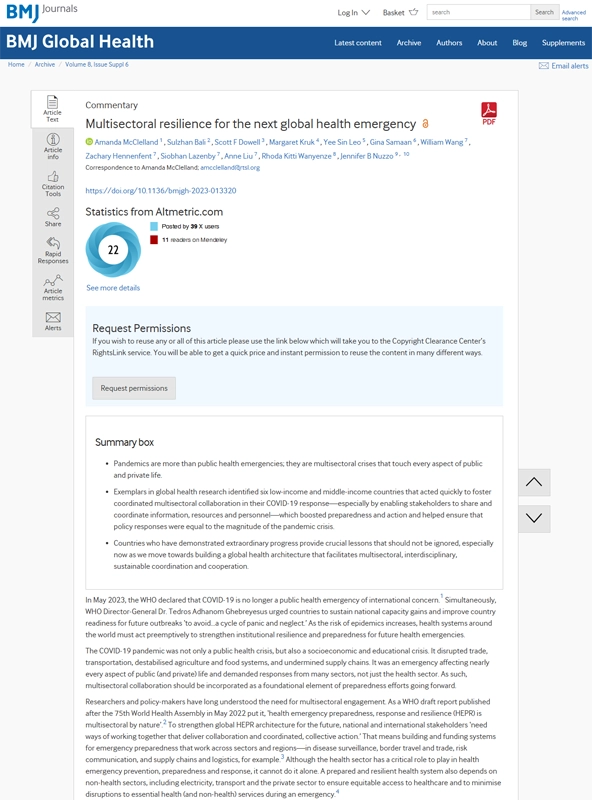
Pandemics are more than public health emergencies; they are multisectoral crises that touch every aspect of public and private life. Therefore, multisectoral coordination—especially by enabling stakeholders to share and coordinate information, resources and personnel—enables appropriate policy responses during crises. Writing in BMJ Global Health, experts at Resolve to Save Lives and our partners identify six […]
Modelling the economic burden of SARS-CoV-2 infection in health care workers in four countries
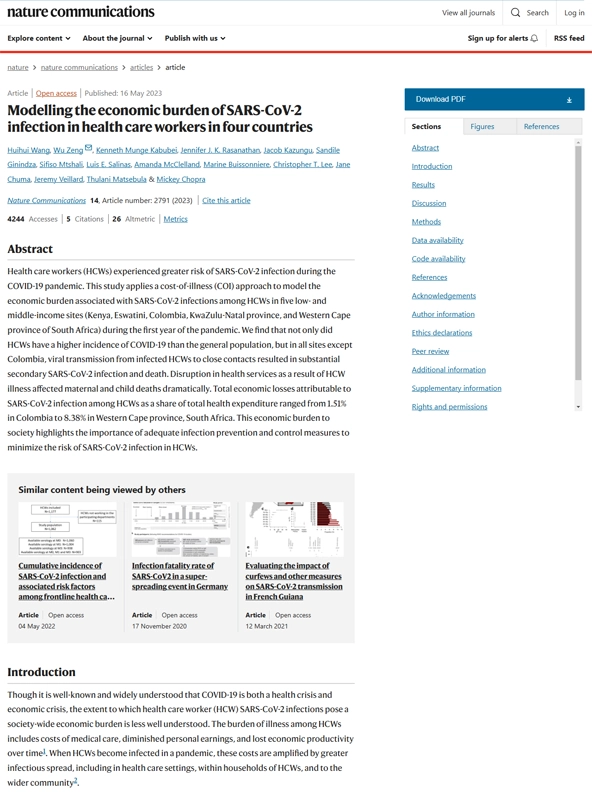
SARS-CoV-2 infections among health care workers caused up to 8.38% of total health expenditures in five low- and middle-income countries, underscoring a need for stronger protection measures for frontline workers, who faced increased risk of infection during the COVID-19 pandemic. Writing in Nature Communications, experts at Resolve to Save Lives used a a cost-of-illness (COI) […]
Food taxes for healthy eating

A preliminary report by the Centre for Health Economics and Policy Innovation advocating for a broader approach to food taxes by applying nutrient profile models to define tax bases, rates, or tiers, aligning taxation with the nutritional quality and health impact of foods.
Investing in global health security: Estimating cost requirements for country-level capacity building
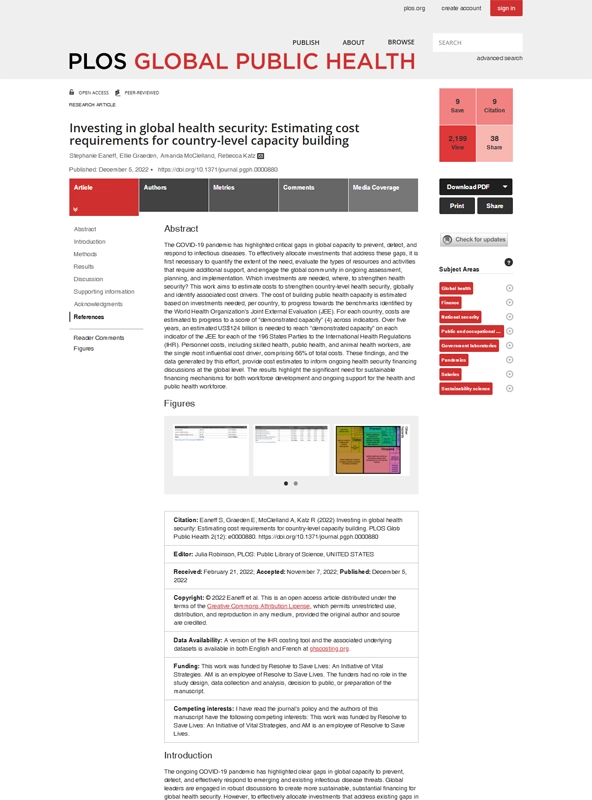
A targeted investment of $124 billion over five years will enable 196 countries to strengthen their core capacities across the World Health Organization (WHO)’s Joint External Evaluation (JEE) indicators. Writing in PLOS Global Public Health, experts at Resolve to Save Lives estimated the costs required to strengthen country-level health security and identified associated cost drivers. […]
Protecting children from the harmful impact of food marketing: policy brief

A policy brief providing guidance for policymakers, program managers, and advocates on implementing comprehensive strategies to protect children from the harmful impact of food marketing by reducing both their exposure to and the influence of such marketing practices.
Implementation of the 7-1-7 target for detection, notification, and response to public health threats in five countries: a retrospective, observational study
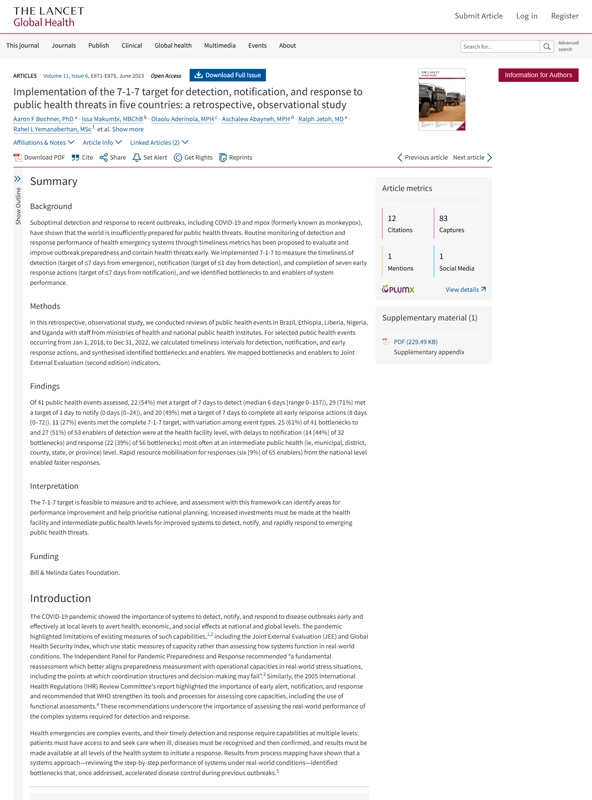
The 7-1-7 target supports timely detection, notification, and response to outbreaks. Writing in the Lancet Global Health, experts from Resolve to Save Lives assessed 41 public health events in Brazil, Ethiopia, Liberia, Nigeria, and Uganda between 2018 and 2022 to understand the frequency at which targets for detection (7 days), notification (1 day) and respones […]